Hello. How have you been doing? Are you enjoying the summer? It’s so hot and humid in Japan that it makes everyone more stressed.
In such a situation, you might want to have some desserts to cool yourself down. Today, I’ll introduce some Japanese summer desserts for you to try in this blog.
Shaved ice
Shaved ice is a standard dessert during the summer in Japan and comes in all shapes and sizes.
The origins of Japanese shaved ice, or, Kakigori, dates back to the Heian period in the 8th century.
The famous author Sei Shonagon (清少納言) introduced shaved ice in the Pillow Book (枕草子) as a special dessert with the Imperial house. It was too difficult to preserve ice at that time, so you can imagine how luxurious it was.
As time went by, the first Kakigori shop opened later in Yokohama in 1869. All shops needed to have permission from the government to use ice, especially for eating, due to issues with public hygiene
Nowadays, many shops offer shaved ice, and you can enjoy a variety of kinds even in winter.



Tokoroten (心太) and Kanten (寒天)
Two similar types of jelly are often seen in Japan in the summertime. One is known as Tokoroten, and the other is called Kanten. What is the difference between the two? Let’s go into this with a bit more detail.
First, looking at Tokoroten, it is made from Tengusa seaweed that has been dried once, boiled once, congealed into a jelly, put into a stainless steel pan, and finally cooled off until it hardens.
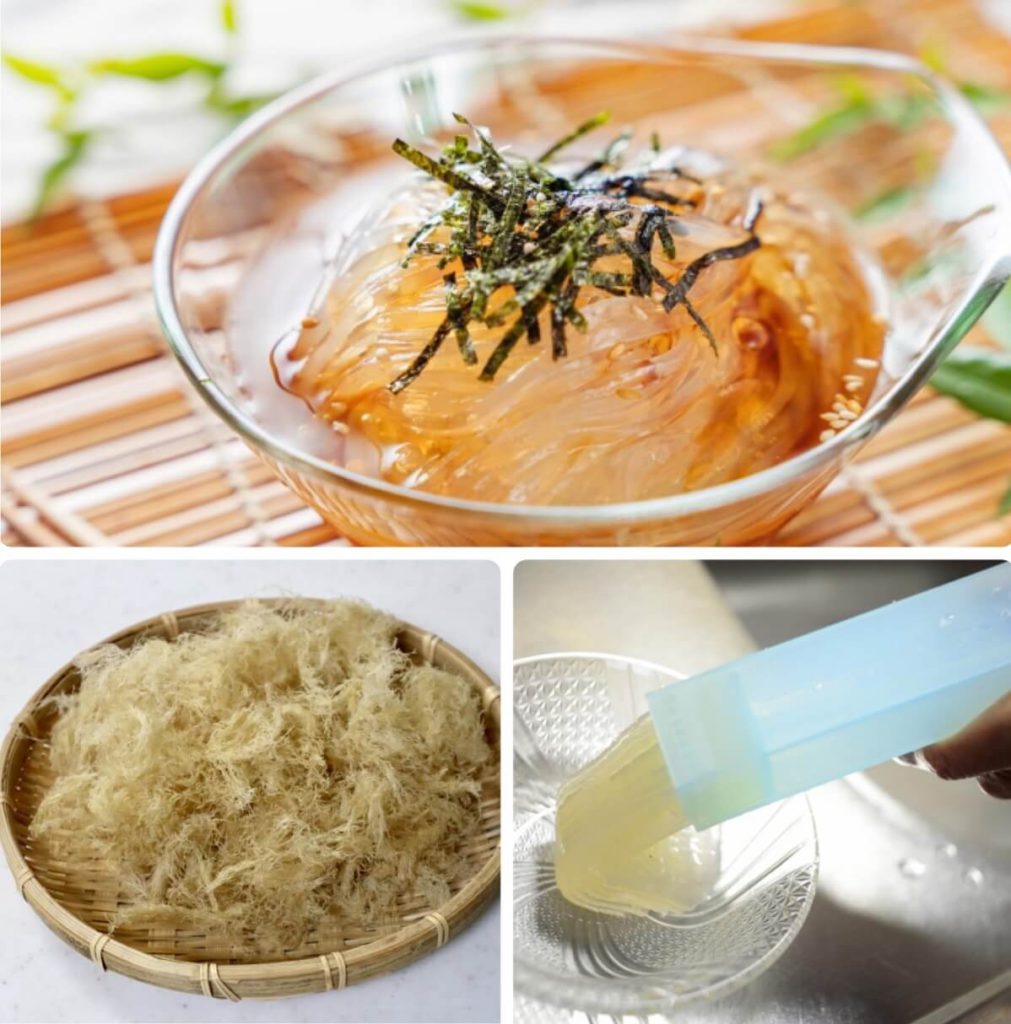
Kanten, on the other hand, follows the same steps as Tokoroten. However, after it hardens, it is once again left out to dry and cut into individual strips.
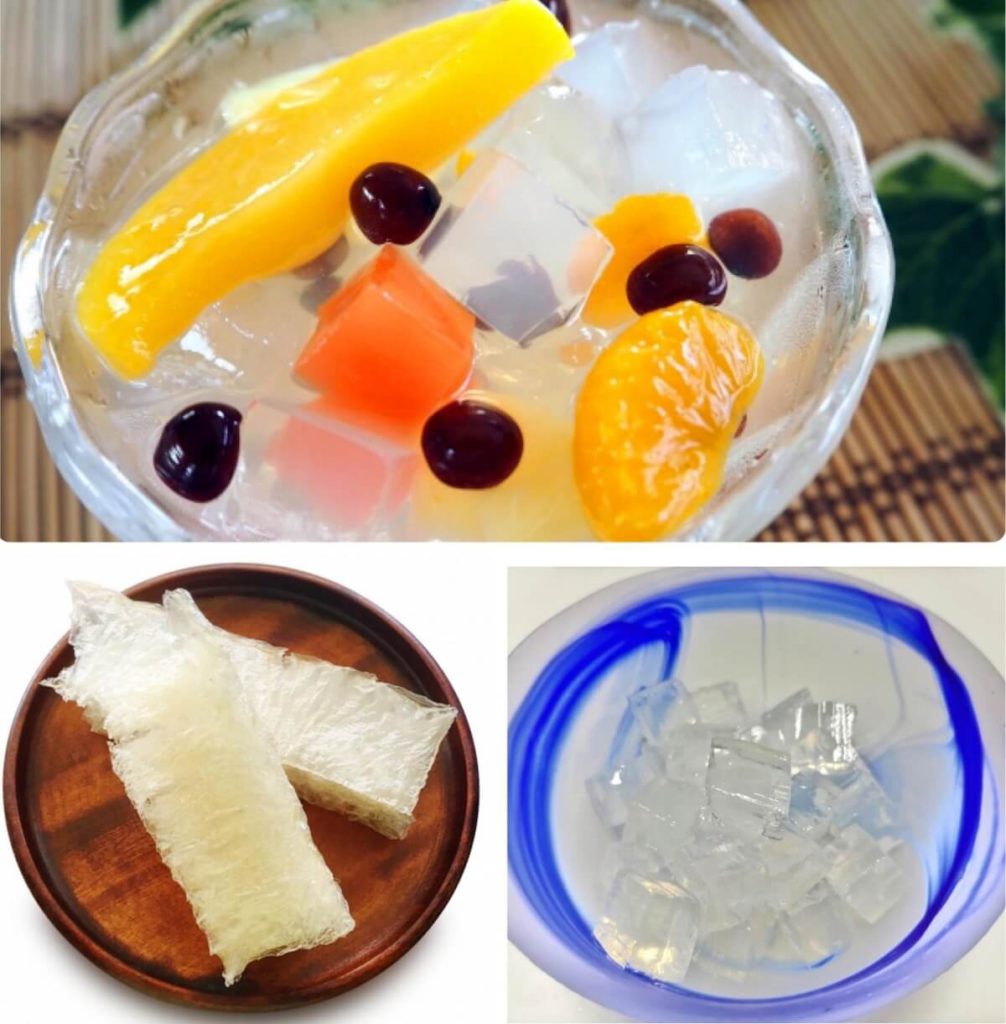
It’s funny, the way of eating Tokoroten is totally different between Kanto and Kansai regions. Kanto people put vinegar soy sauce on Tokoroten, whereas Kansai people see Tokoroten as a dessert, so they eat it with a sweet sauce like Kuromitsu, which is syrup made from brown sugar.
When it comes to Kanten, it’s very useful for dessert. You can often see Kanten with other traditional Japanese sweets, such as An-mitsu, and Mitsu-mame. Milk-kanten.
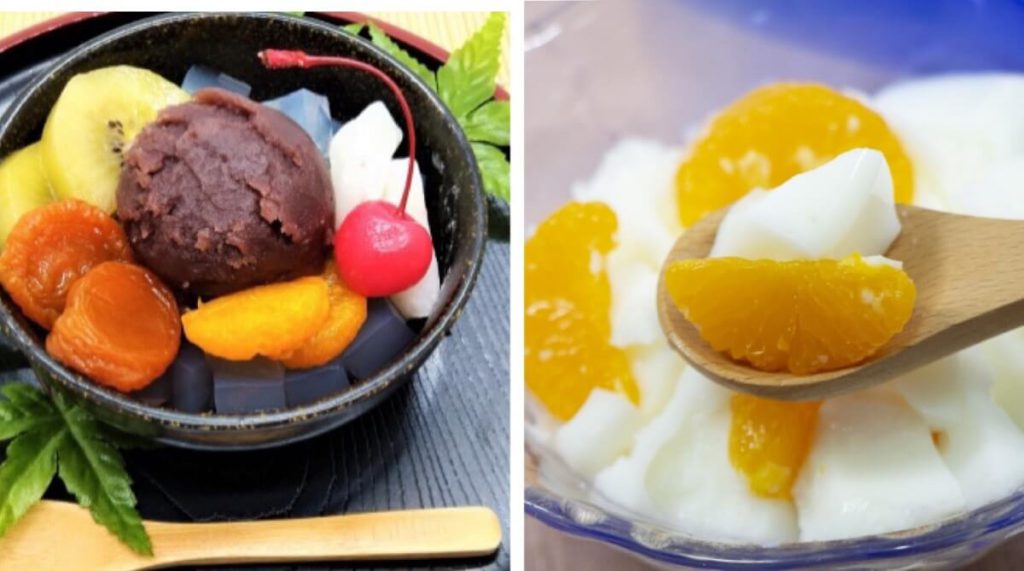
Either way, they are both healthy alternatives to typical desserts, and they are low-carb, so it’s good for people that are concerned about their physical appearance.
Kuzu kiri, Kuzu mochi and Kuzu-manju (葛切り、葛餅と葛饅頭)
The kudzu vine is considered a superfood because nothing is wasted. The flower is used for medicine or herb tea, the stem is processed into fabric, and the root is used to make a starch powder called kuzu-ko.
The name kuzu is taken after the origin of this plant which is Kuzu (国栖), located along the Yoshino River in Nara.


There are a lot of kuzu-ko-based desserts in Japan, such as kuzu-kiri, kuzu-mochi, kuzu-manju. They are soft and chewy, and they melt in your mouth.
Why not try a bowl of cold kuzu dessert on a hot day?
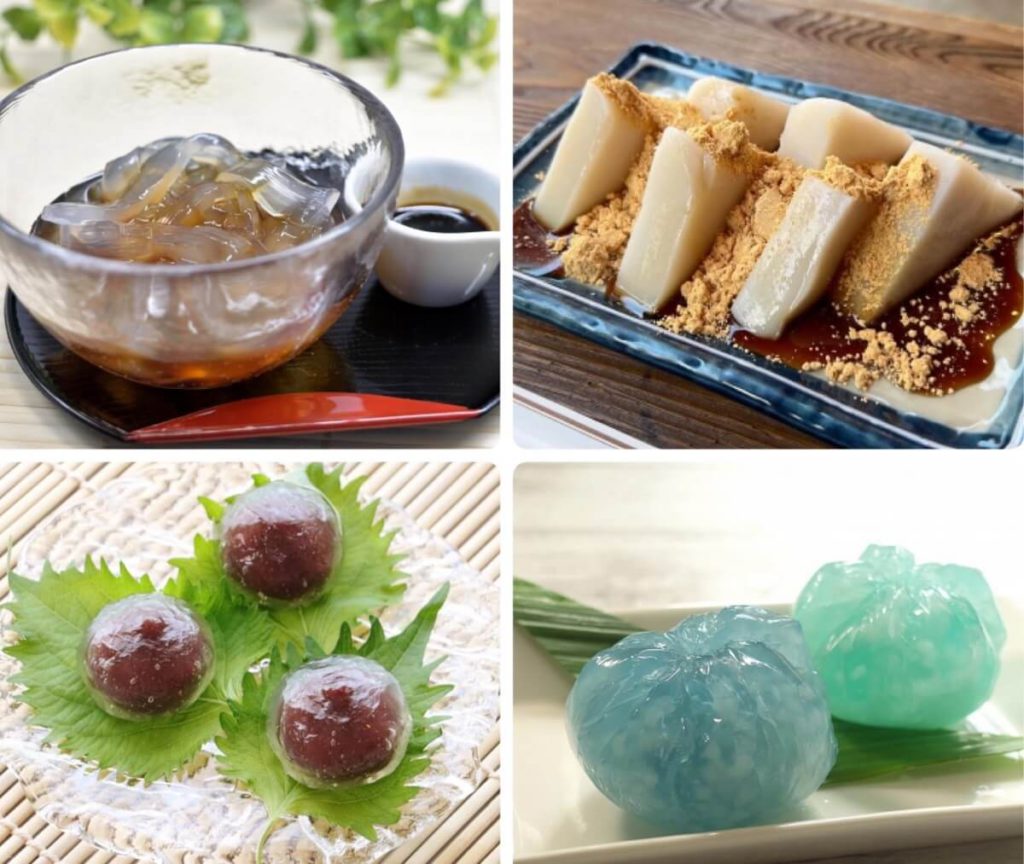
Warabi mochi (わらび餅)
Warabi mochi is made from bracken starch, or warabi-ko in Japanese. It’s commonly eaten with sweet toasted soybean flour and kuromitsu.
Originally, warabi is an edible plant that takes a long time to make the starch. In ancient times, only nobles were able to eat warabi mochi, and it’s said that Emperor Daigo was very fond of it.
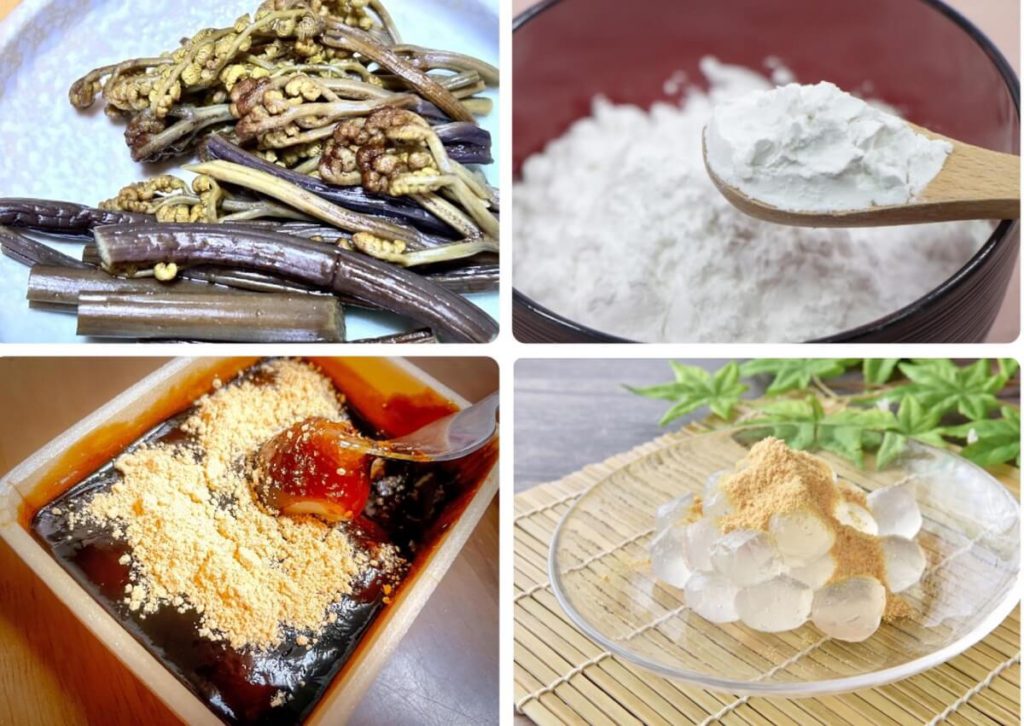
The warabi mochi, which uses 100% warabi starch, is very expensive but worth eating. As you can see in the picture above, it looks brownish and is sticky. You can find a reasonable one in a convenience store or a supermarket. It’s delicious enough, but I wouldn’t call it a must-try item.
Would you like to have the best warabi mochi from a famous shop at least once in your life? I’m sure you would be surprised by the taste.
Jelly uses Japanese starch (和風ゼリー)
When summer comes, many Japanese jellies appear in the sweet shops. Almost all products are made from kuzu or kanten starch and contain fruit or sweet bean paste. They describe the summer scenery and look stunning.
That is exactly the pride of Japanese culture I wanted to tell you. I would like to think Japanese people enjoy the seasonal transition more than any other people in the world.
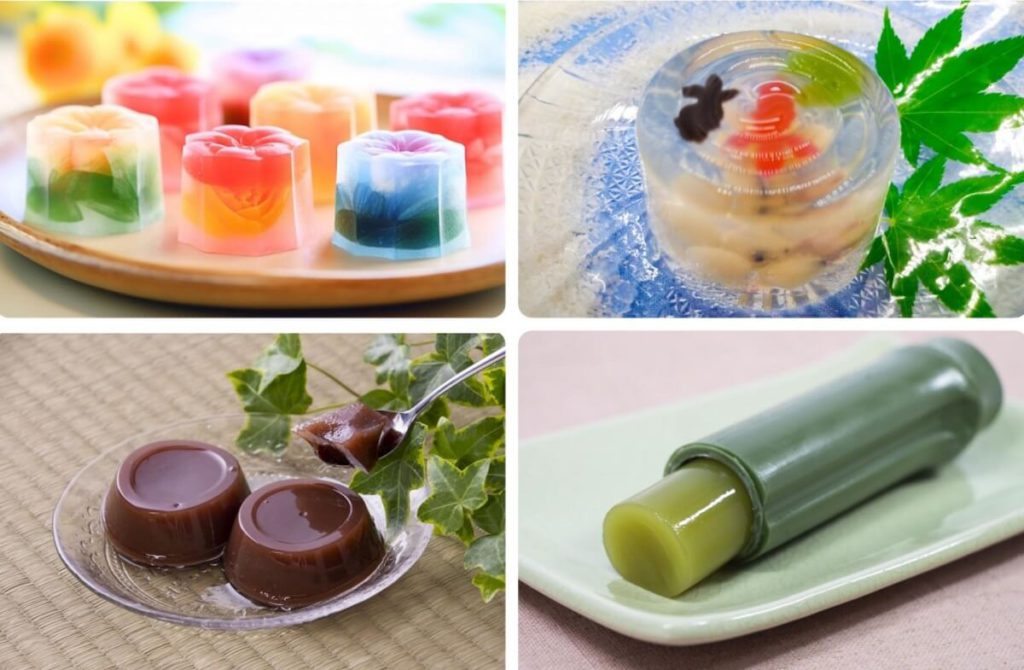
Recommendations
*For shaved ice
Tea and sake room Tasuki (お茶と酒 たすき)
https://shinpuhkan.jp/shops_restaurants/tasuki/
*For kuzu mochi and kuzu kiri
Yoshino kuzu Sakura (吉野葛 佐久良)
http://www.nizuka.com/naramachi.htm
Kagizen Yoshifusa (鍵善良房)
https://www.kagizen.co.jp/kissa/
*For warabi mochi
Gion Tokuya (ぎおん徳屋)
http://gion-tokuya.jp/
Final note
Thank you for reading my article to the end.
Did you enjoy the cool breeze from this blog? From my point of view, this 2023 summer was the hottest of my lifetime, and the heat wave was the highest recorded to date. You might want to take a break with a cold dessert for yourself. If you have the chance, why don’t you have some healthy Japanese desserts every once in a while?It might help you in a big way.
Traditionally, people in Japan have cherished finding ways to describe the changing of the seasons… Also, can you imagine the first human being who couldn’t to find something to eat so they developed flour or starch? And then they turned it into a nice way to cool their body temperatures? Aren’t humans amazing?
See you next time!
Brand Ambassador of kyoto Denim company, Kimono dresser, Japanese flower arrangement instructor I was born and raised in Osaka, I know this area like my backyard. I’d like to introduce Japanese culture and good points to someone from overseas. That’why I study English every day. Please feel free to ask me if you need anything.



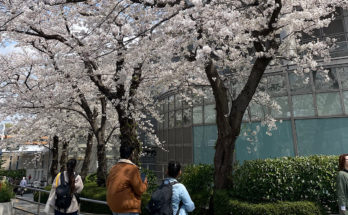

 HTJ has a YouTube page! Check it out
HTJ has a YouTube page! Check it out
I shared this article with my English teacher in Jamaica!
We enjoyed talking about Japanese summer sweets through your article.
She was very interested in Japanese fancy shaved ice because in Jamaica, they only have shaved ice with sweet syrup flavored strawberries or something. She also loved the jelly made from Japanese starch. She said the jelly describing the summer scenery is very special because it has Japanese history in it. She said if she could get one, she would keep it in the fridge..
I also learned a lot about the history of Japanese sweets. Thank you for sharing a variety of things as always.